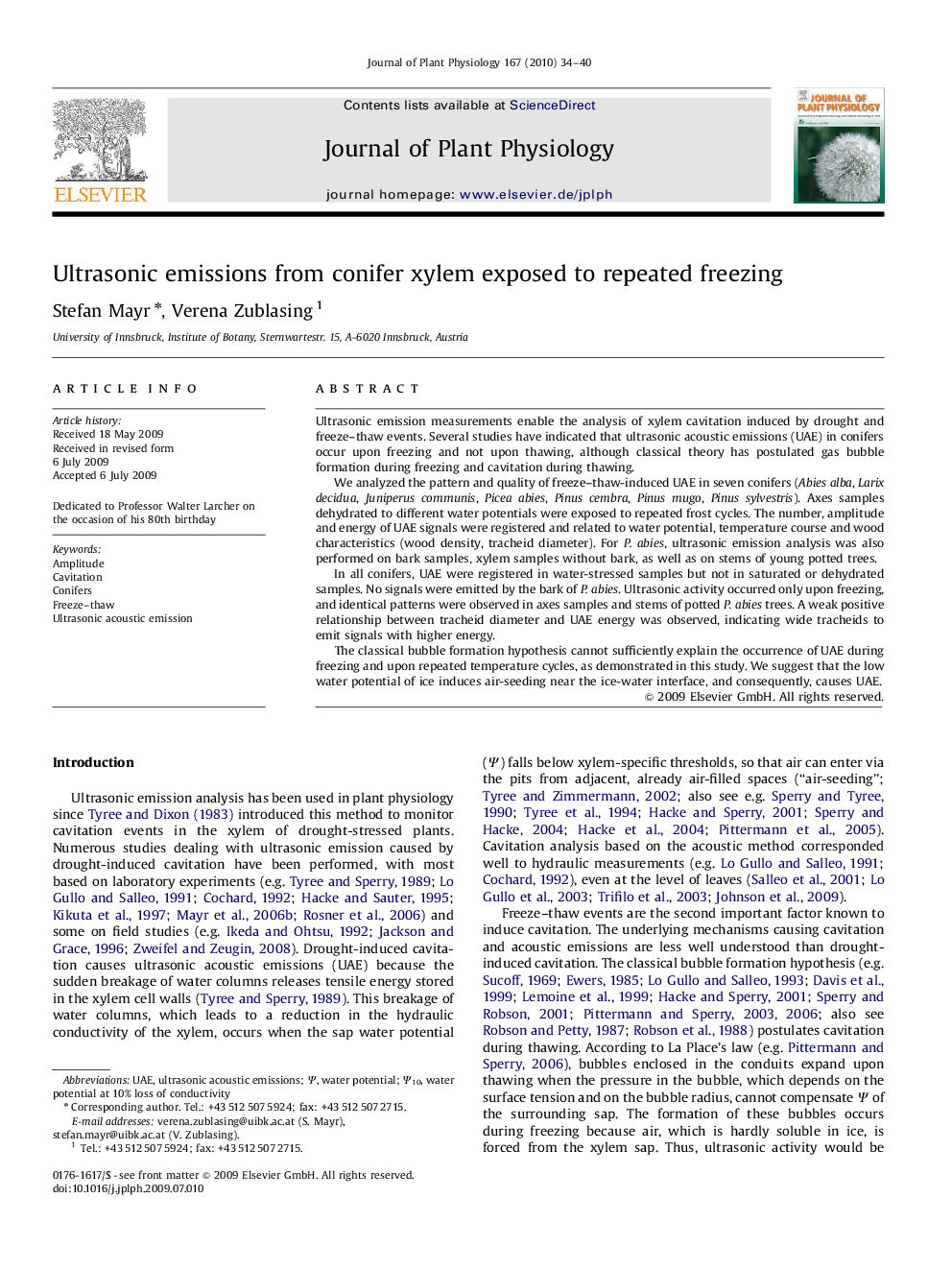| Article ID | Journal | Published Year | Pages | File Type |
|---|---|---|---|---|
| 2056898 | Journal of Plant Physiology | 2010 | 7 Pages |
Ultrasonic emission measurements enable the analysis of xylem cavitation induced by drought and freeze–thaw events. Several studies have indicated that ultrasonic acoustic emissions (UAE) in conifers occur upon freezing and not upon thawing, although classical theory has postulated gas bubble formation during freezing and cavitation during thawing.We analyzed the pattern and quality of freeze–thaw-induced UAE in seven conifers (Abies alba, Larix decidua, Juniperus communis, Picea abies, Pinus cembra, Pinus mugo, Pinus sylvestris). Axes samples dehydrated to different water potentials were exposed to repeated frost cycles. The number, amplitude and energy of UAE signals were registered and related to water potential, temperature course and wood characteristics (wood density, tracheid diameter). For P. abies, ultrasonic emission analysis was also performed on bark samples, xylem samples without bark, as well as on stems of young potted trees.In all conifers, UAE were registered in water-stressed samples but not in saturated or dehydrated samples. No signals were emitted by the bark of P. abies. Ultrasonic activity occurred only upon freezing, and identical patterns were observed in axes samples and stems of potted P. abies trees. A weak positive relationship between tracheid diameter and UAE energy was observed, indicating wide tracheids to emit signals with higher energy.The classical bubble formation hypothesis cannot sufficiently explain the occurrence of UAE during freezing and upon repeated temperature cycles, as demonstrated in this study. We suggest that the low water potential of ice induces air-seeding near the ice-water interface, and consequently, causes UAE.
